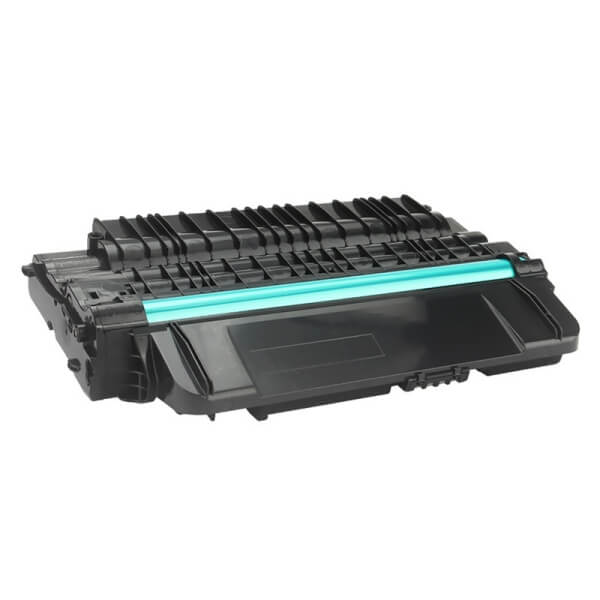Toner cartridge technology is a common printing technology, widely used in office equipment such as printers and copiers. This article will comprehensively analyze toner cartridge technology from the perspective of principle to application, including its working principle, manufacturing process, application field and future development trend.
Working principle of toner cartridge
The working principle of toner cartridge technology is based on the characteristics of charge induction and photosensitive materials. Its basic principles are as follows:
1. Photosensitive material: The core of the toner cartridge is a photosensitive material, usually platinum selenide or cadmium selenide. These materials will generate charge after being exposed to light.
2. Charge induction: The surface of the toner cartridge is coated with a layer of insulating material, which is then coated with a conductive layer. When the toner cartridge is irradiated by a light beam, the light energy excites the electrons on the photosensitive material, causing it to jump from the valence band to the conductive layer, generating a charge.
3. Laser scanning: The laser inside the printer will scan the beam on the surface of the drum. According to the needs of the printed content, the image information is projected onto the drum in the form of a dot matrix by controlling the position and intensity of the laser beam.
4. Charge distribution: During the laser beam irradiation process, the charge on the drum surface will be distributed according to the distribution of the laser beam, forming a charge pattern, which represents the image or text to be printed.
5. Powdering and fixing: The charge pattern on the drum is then used to absorb powder ink particles, which have opposite charges. The powder pattern on the drum is then transferred to the print medium (usually paper) and fixed on the paper by the fuser to form the final printed image.
Toner Cartridge manufacturing process
The manufacturing of toner cartridge involves multiple steps to ensure its high quality and stability:
1. Material selection: The core of the drum is the photosensitive material. High-quality materials such as platinum selenide or cadmium selenide must be selected during the manufacturing process. These materials need to be specially processed to ensure their photosensitive properties.
2. Toner cartridge housing: The toner cartridge housing is usually made of plastic or metal and must have properties such as wear resistance, insulation and conductivity. There is an opening in the housing for the light beam to enter and the toner to be transmitted.
3. Photosensitive layer coating: The photosensitive material is coated inside the housing and cured through a chemical reaction and heating process to ensure uniformity and stability.
4. Conductive layer coating: A conductive layer is coated on the photosensitive layer, usually using conductive ink or metal film, so that the charge can be transferred to the surface of the toner cartridge.
5. Processing and testing: After manufacturing, the toner cartridge will undergo precision processing and testing to ensure that its performance meets the specifications.
Application areas of toner cartridges
Toner cartridge technology has a wide range of applications in multiple fields, including:
1. Office printing: Toner cartridge printers are commonly found in office environments and are used to print documents, reports and graphics.
2. Production printing: Toner cartridge technology is also used in production environments, such as printing packaging materials, labels and advertising materials.
3. Medical field: Toner cartridge printers are often used in medical devices and medical record systems to print medical reports and images.
4. Book publishing: Toner cartridge printing is widely used in book publishing, especially in small batch printing and personalized printing.
5. Engineering drawing: Toner cartridge printers are used to print engineering drawings and CAD designs.
Future development trends
Toner cartridge technology has made significant progress in the past few decades, but there is still room for improvement. The following are some future trends in toner cartridge technology:
1. Higher resolution: As the requirements for printing quality continue to increase, toner cartridge printers will continue to improve resolution to achieve finer images and text.
2. More energy-saving and environmentally friendly: Future toner cartridge technology will pay more attention to energy efficiency and environmental protection, reducing the waste of waste toner and the impact on the environment.
3. Digital integration: Toner cartridge technology will be more integrated with digital workflows and cloud printing services to meet the needs of an increasingly digital office environment.
4. Versatility: Toner cartridge printers will have more versatility, such as the integration of scanning, copying, faxing and other functions.
5. 3D printing: Toner cartridge technology is expected to expand into the field of 3D printing, providing more innovative solutions for the manufacturing industry.
Conclusion:
As a mature printing technology, toner cartridge technology has broad application prospects in office and industrial fields. Future development will continue to improve its performance, efficiency and environmental protection to meet changing needs.


Leave A Comment